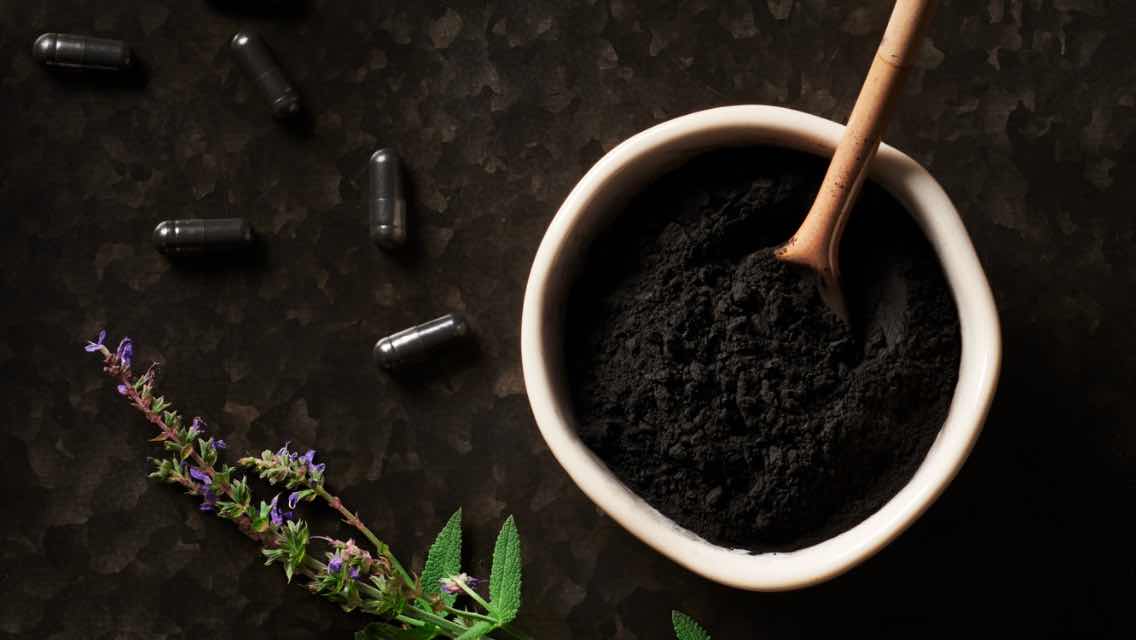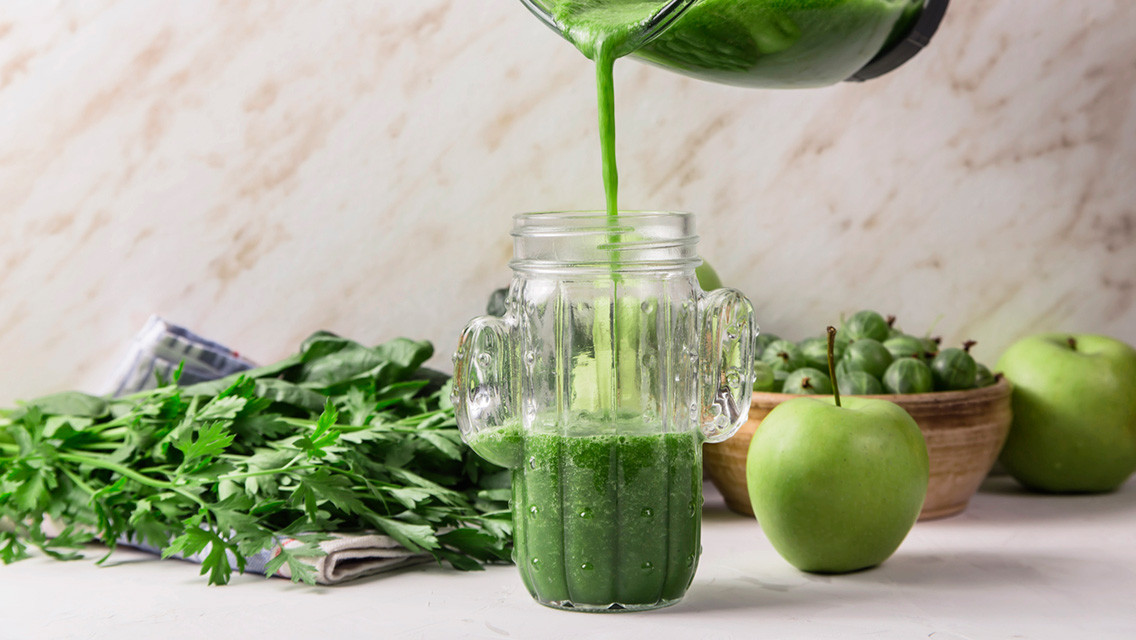Activated charcoal has become quite trendy lately, with companies adding it to foods like ice cream, lattes, and even pizza crusts in the hopes of providing a detoxifying boost. The seemingly magical black powder has come to the forefront as a natural way to detox our bodies, but questions swirl around efficacy, quality, applications, and potential side effects.
Different from the charcoal you grill with, which is a known carcinogen, activated charcoal is commonplace in both the medical world and in the wellness community. Used in hospitals for overdoses and seen in juice shops as a detox “lemonade,” it has many potential health benefits and detoxification abilities.
What Is Activated Charcoal?
This black powder is made from the byproducts of carbon-containing materials like coconut shells, wood, bamboo, or coal. The activation comes from the addition of oxygen to increase its porosity. The more porous the charcoal, the better it binds to toxins, chemicals, and gases.
Although little research has been done to support the health claims, it has been around for centuries in both Ayurvedic and Chinese medicine. Generally safe in moderation, it can be a valuable addition to any health regimen, in my opinion.
However, while activated charcoal’s black color makes it an Instagram favorite, I recommend avoiding it when it’s added to foods, such as ice cream and lattes. It doesn’t differentiate what it binds to, and you may lose the benefits of the vitamins and minerals in foods when you ingest them with activated charcoal. It evens binds to medications, so you want to avoid taking it if you’re on medication.
How to Use Activated Charcoal
Here are several ways to include activated charcoal in your health arsenal:
Create an Activated-Charcoal Water Filter
Activated charcoal is commonly used to filter water, with items like these binchotan sticks, which have been used by the Japanese for years. I have one in the refillable glass water pitcher that I keep in the fridge to filter tap water. One stick lasts three months. (Any filter becomes less effective over time and must be replaced every few months.)
It works through a chemical process called ADsorption (not ABsorption) — the adhesion of certain elements to a material. The “holes” in the structure of activated charcoal serve as open spaces that get plugged when exposed to toxins. When all the holes are filled, it’s time to replace! If used for too long, the activated charcoal won’t release the already adsorbed toxins back into the water. I’ll never go back to my regular water filter again after using these. They are both elegant and effective.
While activated charcoal doesn’t remove everything, it does eliminate important toxins, including chlorine, chloramine, hydrogen sulfide, phenol, tannins, and small amounts of heavy metals (copper, iron, mercury). It does not remove ammonia, fluoride, nitrates, bacteria, or viruses.
Make Your Own Activated-Charcoal Face Mask:
The adsorptive quality acts as an attractor for dirt and oil that are trapped in our pores and can contribute to acne. For acne-prone skin, mix one to two capsules with 1 tablespoon of Manuka honey and apply to face. Let it rest for 15 minutes, then rinse off completely. You can even apply the paste to your body to reduce odor (see below) and provide relief from insect bites.
Brush Your Teeth With Activated Charcoal:
Activated charcoal can bind to coffee and wine to lift stains from the teeth. It’s also reported to help prevent bad breath, cavities, and even gum disease. Open one capsule onto a wet toothbrush. Due to its abrasiveness, I recommend brushing very gently so as not to damage the tooth enamel, letting it sit for two minutes, and then rinsing the mouth until clear. Limit usage to no more than one to two times a week. (Activated charcoal can stain clothes and grout, so be careful when using it.)
Use an Activated-Charcoal Deodorant:
Activated charcoal is a natural way to adsorb sweat and odors without the damaging effects of aluminum deodorant. Studies in recent years have shown a correlation between increased risk of breast cancer and aluminum antiperspirants. Brands like Piperwai and Kaia Naturals are excellent options to stay odor-free.
Other Uses:
You can also take activated charcoal orally in various forms, including capsules. It not only helps to detox, but it is perfect for traveling to treat excess gas, indigestion, food poisoning, and diarrhea.
When shopping, look for capsules made without artificial sweeteners. Make sure it is free from the sugar alcohol sorbitol, which can cause diarrhea, and choose brands made from coconut shells with an ultra-fine grain, like this from bulletproof.com. Why? The ultra-fine grain means increased charcoal surface area, which means increased adsorption. Coconuts also happen to be a renewable source of energy, as the trees can be preserved for several years. The ultra-fine grain also makes it easier to use when mixing as a toothpaste or facial mask.
Take the capsules one to two hours prior to meals, supplements, or prescription medications, including birth control pills. It is critical to make sure you stay hydrated to aid in flushing out toxins and prevent constipation.
If you’re using activated charcoal for the first time, I recommend starting at a low dose (500 mg) to see how your body reacts. Everybody responds in their own unique way, so consult with a functional-medicine doctor before taking and for correct dosing, especially if you are pregnant or younger than 18 or have a chronic medical condition.
This article has been updated. It was originally published by Experience Life on Feb. 20, 2018.




This Post Has 0 Comments